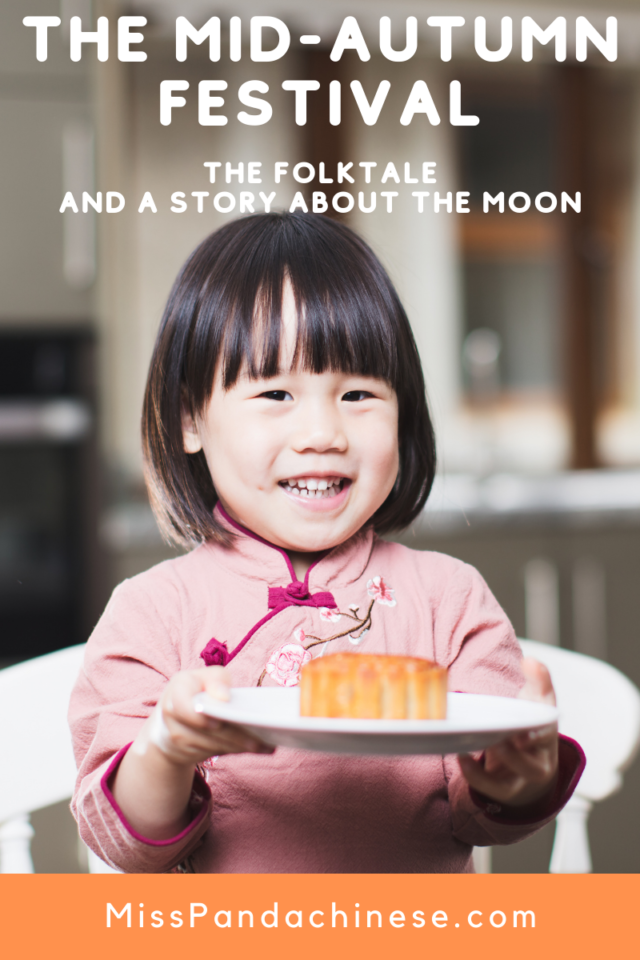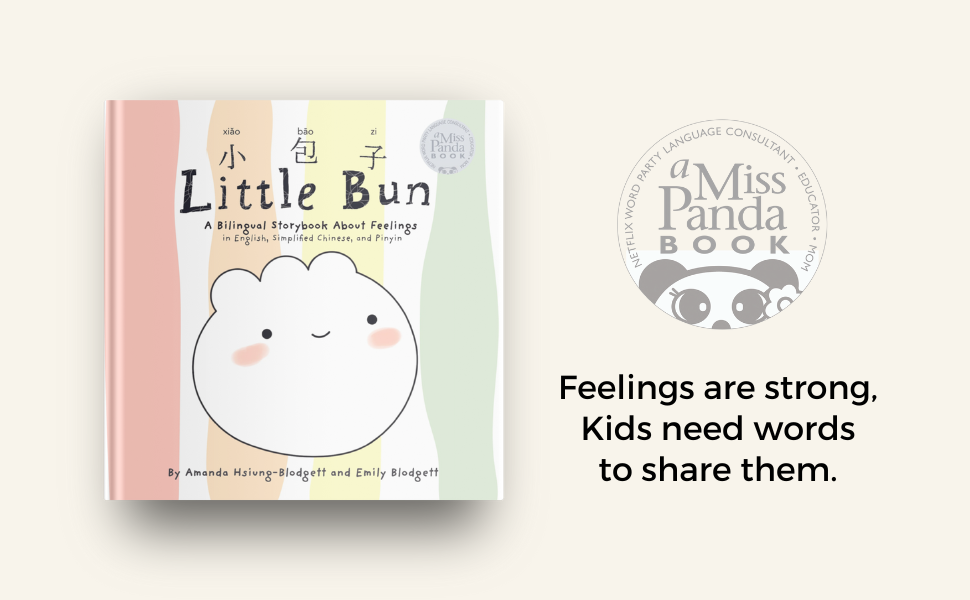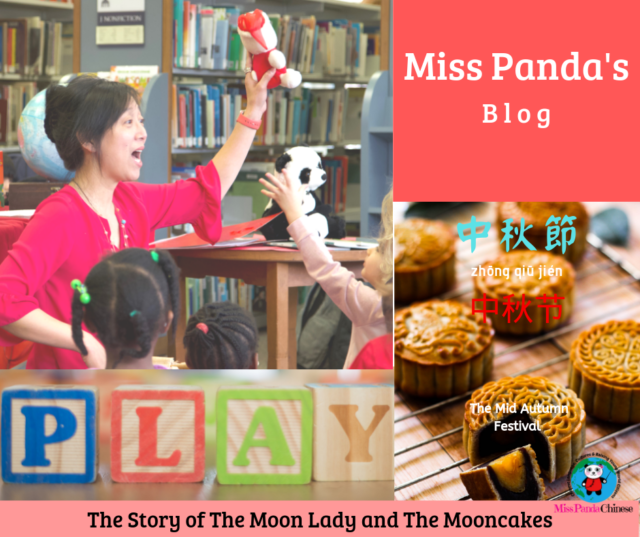The Mid Autumn Festival
The Mid Autumn Festival is always a day with a big full moon in the sky. In Western culture, some call this day the Moon Festival. For the Chinese, it is the Mid Autumn Festival, Zhōng Qiū Jié 中秋節(节). It always falls on the fifteenth day of the eighth month on the lunar calendar.
In 2024, the Mid-Autumn Festival lands on September 17 and it will be on October 6 in 2025.
This cultural festival also indicates the weather is about to get cooler.
In ancient China, this time of the year was a time for harvesting and celebrating a good year. But, in the folktale, there was no harvest and people were having a difficult time.
The Story
There were ten blazing suns in the sky. The hot sun dried up the rivers. There was a serious drought. People were running out of water to drink. The crops in the rice fields were withering. The emperor summoned the famous archer, Hòu yì, to shoot down nine of the ten suns.
Archer Hòu yì fulfilled the mission successfully.
As a reward, archer Hòu yì received a “pill of immortality.” He went home and gave the precious pill to his wife, Cháng’é, for safekeeping. Cháng’é kept the pill with her.
However, the news about the priceless immortal pill got out. A friend of the archer learned about it and came to his house for a visit. He wanted to steal the elixir from Cháng’é. Cháng’é was alone at home. She had no place to hide from the unexpected visitor.
As the man got closer and closer to her and asked her for the elixir Cháng’é panicked. Facing the threat and being under tremendous pressure, Cháng’é took out the pill and swallowed it.
After Cháng’é ate the elixir, she felt she was getting lighter and lighter. Not long after, she started to float. She floated and she went higher and higher. She flew all the way to the moon.
As she landed on the moon, Cháng’é coughed up the immortal pill and it turned into a rabbit. This is the only companion Cháng é, the moon lady had in her new home. Chinese people know this rabbit as the Jade Rabbit.
On the day of the Mid Autumn Festival, Chinese children always look at the moon with curious eyes and imagination to search for a trace of the shadow of the moon lady, Cháng’é, and the Jade Rabbit.
Chinese families often have BBQ events outside of their apartments during the Mid-Autumn Festival. They share the Mid-Autumn Festival delicacy, mooncakes with family, friends, and neighbors.
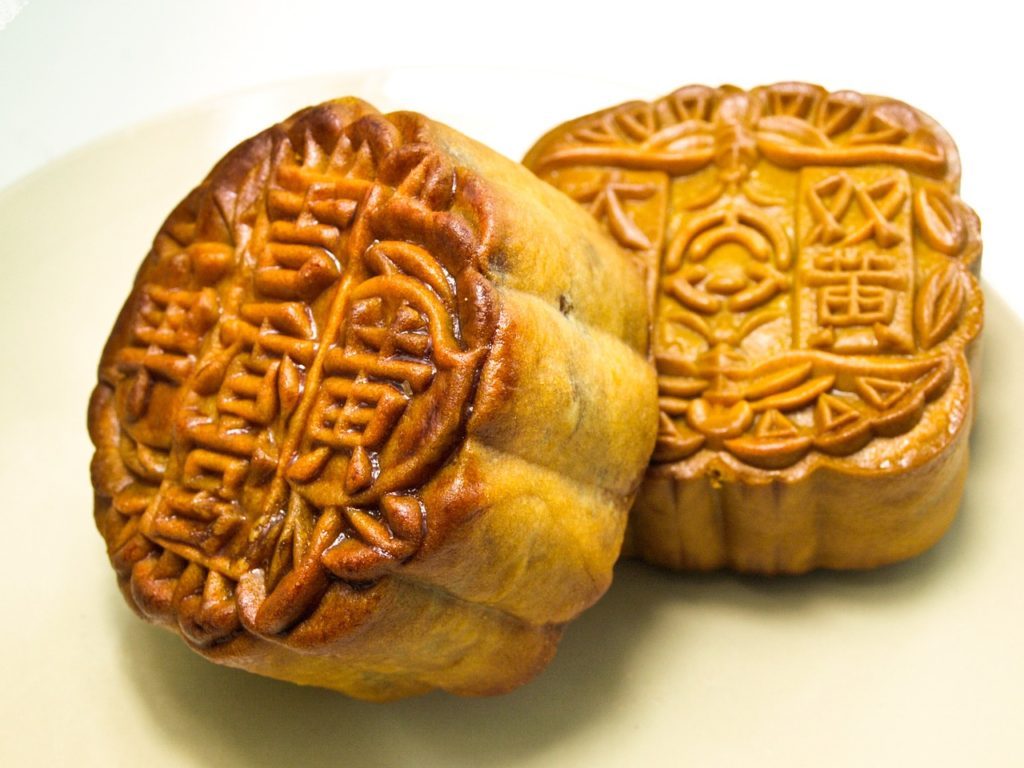
Why the mooncakes?
The traditional mooncakes are round and it has a meaning of perfection and togetherness.
And, yes, there is a legend behind the mooncakes.
It was several hundred years ago. When the Chinese were ruled by the Mongolians and the Chinese wanted to overthrow the foreign rulers.
Around Mid-Autumn Festival the Chinese rebel villagers inserted paper slips with messages into the mooncakes. When these mooncakes were delivered and eaten all the rebels who received the messages fought against the Mongolians according to the secret plan.
The Chinese successfully overthrew the Mongolian rulers and established the Ming dynasty (1368-1644 AD).
From the moon lady to the mooncakes, these are stories parents and grandparents share with their children. After a family dinner on this special day, Chinese families usually talk a walk, look at the beautiful moon, and reflect on how grateful they are for a season of harvest and well-being.
Unboxing a mooncake gift box!
join me and see what mooncakes look like, the various flavors, and how they are packaged in a mooncake gift box. Business owners in the Chinese community gift moon cakes to their employees to show their gratitude for their good work, Families and friends also give each other moon cakes during this time of the year. You can usually find Moon Cakes in Asian grocery stores and bakeries. If they are not available you can also check out online bakeries.
Making moon cakes at home
I love the traditional moon cake fillings. The top choice is the sweet red beans filling. The second one is the sweet lotus filling. The first reference video on making traditional moon cakes is by Chef Joshua Weissman is in English. I received virtual assistance from Grandma panda and I dived in with making the red bean paste from the raw beans. Chef Weissman’s method is authentic. The best thing about homemade fillings is that you can adjust the sweet level.
However, if you want to make it easier the first time you can use the premade red bean filling. Morinaga Ogura An is a Japanese brand and it is closest to the homemade texture and flavor for my family and our friends who have tried them with us. The second reference video on making red bean filling moon cakes is in Mandarin. The cooking steps and recipe are easy to follow.
For making lotus moon cakes I recommend the recipe by one of my favorite chef teams, The Woks of Life.
You can also try the poplar no-baking Snow Moon Cakes below.
Building Literacy with Mid Autumn Moon Festival
Language learning with a cultural celebration is engaging because of the stories, food, and traditions involved in the event. It is an active learning experience with activities to try, food to make, and stories to connect. I wrote this poem for young students to build their literacy skills with simple words, repetition, and audio support. This is a resource for children who are learning Chinese as a second language and heritage language.
- Traditional Chinese with Pinyin and English version
- Traditional Chinese with Pinyin, English, and AUDIO support version
- Simplified Chinese with Pinyin and English version
- Simplified Chinese with Pinyin, English, and ADUIO support version
The Mid Autumn Festival Activity Pages with coloring pages, word search, and cultural facts. Free download here.
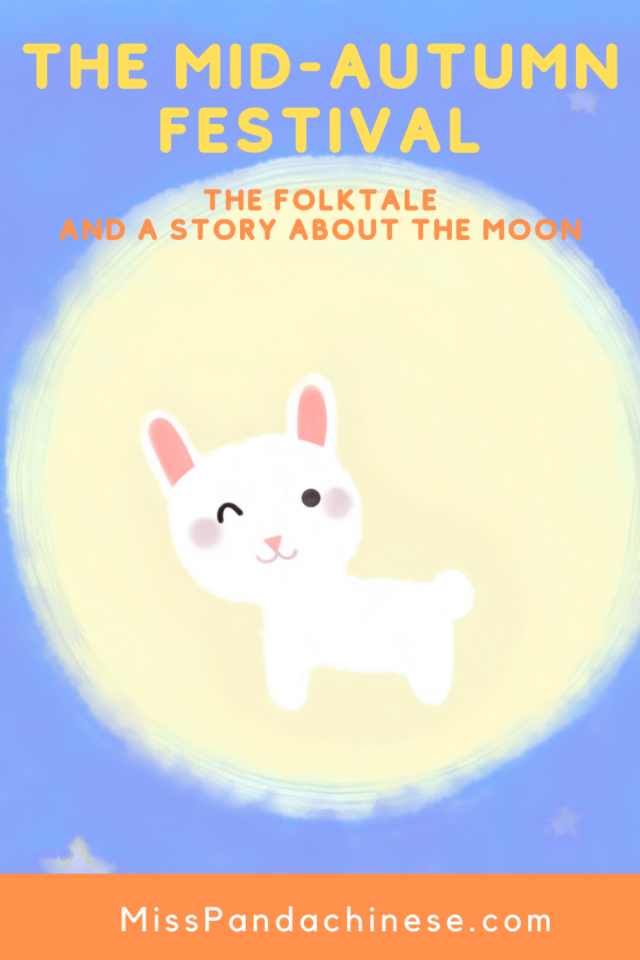
A Poem for the Moon Festival – Digital Download Teaching Resource at Miss Panda Chinese Teachers Pay Teachers: Traditional Chinese version | Simplified Chinese version
Storytime with Miss Panda: Where Is The Moon?
audio: Mandarin Chinese with English support
月亮 月亮 在哪裡?| Traditional Chinese
Yuèliàng yuèliàng zài nǎlǐ? | pinyin
月亮 月亮 在哪里?| simplified Chinese
An Interview with Ms. Amy about The Mid Autumn Festival in China
audio: Mandarin Chinese with English support
English interview starts at the beginning
The Mandarin version starts at 18:27
World Culture Exploration with Mid-Autumn Festival
Question: Are there any other cultures and countries celebrating a similar festival?
Yes! Countries you can explore are Japan, Korea, and Vietnam.
Japan
Ksukimi in Japan is a time to appreciate the autumn moon. The date for Ksukimi also falls on the 15th day of the eighth month of the traditional Japanese calendar. There is also the waxing moon festival which falls on the 13th day of the ninth month. These two dates on the traditional Japanese calendar usually land in September and October.
Please note that Japan is now using Gregorian Calendar like most of the world. They started the practice in 1973.
The traditional festival food is Tsukimi Dango, a type of rice dumpling. It is similar to mochi. You can try it with this simple recipe in the video. Do you know why Ksukimi Dango is white? Yes, it resembles the bright moon. Also, eating them on the night of the festival is believed to bring you good health and good luck! You might see the display of 12 Dango to represent the 12 months in a year. You may also see a stack of 15 Dango during the festival to indicate the 15th day of the month.
Furthermore, you will see the display of pampas grass, Susuki in the moon viewing locations to protect the area. Other displays for the festival include plumes (good harvest), taro bulbs (prosperity), and the performance of the tea ceremony.
Korea
Chuseok in Korea is a major festival. It is a three-day celebration of the mid-autumn harvest festival in South Korea. The celebration date starts on the full moon date of the 15th day of the eighth month on the lunar calendar. Traditional foods for this time are Songpyeon, a type of rice cake made of rice flour; Yakgwa, a fried sweet delicacy, often prepared for major Korean festivals; Asian pears. oranges and rice wine. Check out how you can make Songpyeon with the video below.
More importantly, we need to know the traditions of the festival which include the ceremony of commemorating one’s ancestors at home and paying a visit to the ancestor’s graves to tidy up and display food offerings. Does this practice very similar to the Chinese Qing Ming Festival?
Vietnam
Tết Trung Thu, the Moon Festival in Vietnam is also known as the Children’s Festival. You need to know that people prepare for this festival weeks before its arrival. When people do this kind of extended preparation you know it is a major cultural festival just like major holidays such as Thanksgiving, Christmas, and Ramadan just to name a few.
Even though there is the Chinese Mid Autumn Festival influence Vietnam has its own version of the origin of the festival. The most popular folktale of the festival is about a man named Cuội who floated to the moon from a magic banyan tree. As Chinese people look at the moon and look for the Moon Fairy, Chang E and the Jade Rabbit. In Vietnam, people are searching for the shadow of a man sitting under a tree in the full moon during this festival.
Traditional foods you will see during this time are:
(1) Mochi-like sticky cakes called “bánh dẻo.” See how to make them in the video below. It is Snow Moon Cake!
(2) Baked moon cakes called “bánh nướng.
You also want to know that in Vietnam, the celebration starts on the evening of the 14th day of the 8th month at the end of the 15th day of the 8th month on the lunar calendar. At the same time, it is also an important traditional practice for families to worship their ancestors on this day with food and cake treats on the day of the festival.
What’s more about the celebration? Toys for the kids! And? You will also see lion dance performances each led by a male performer who wearing a round happy face mask. This performer represents the Earth God and he delights the crowd and reminds people to be grateful for the abundance on earth. When the evening moves in children carry their lanterns, and the lion dance and acrobatic performance continue to surprise the kids with their unexpected moves.
Premium Resources For Home and In the Classroom:
-
Chinese Reader: The Mid Autumn Festival A Poem (Simplified Chinese-Pinyin-English with AUDIO support)
-
Chinese Reader: The Mid Autumn Festival A Poem (traditional Chinese-Pinyin-English with AUDIO support)
-
The Solar System Planets Basic Facts Posters (Simplified Chinese-Pinyin-English with AUDIO support)
-
The Solar System Planets Basic Facts Posters (traditional Chinese-Pinyin-English with AUDIO support)
-
Word Wall: The Solar System Planets Word Signs (traditional Chinese and Simplified Chinese-pinyin-English with AUDIO support)
More to explore
Everything You Need to Know About the Mid Autumn Festival
- In the link, you will see various Mooncakes, how to make moon cakes, and crafts for the Moon Festival
World Culture: Books for the Mid Autumn Festival and Chinese Culture
photo by Photo by Huong Ho
